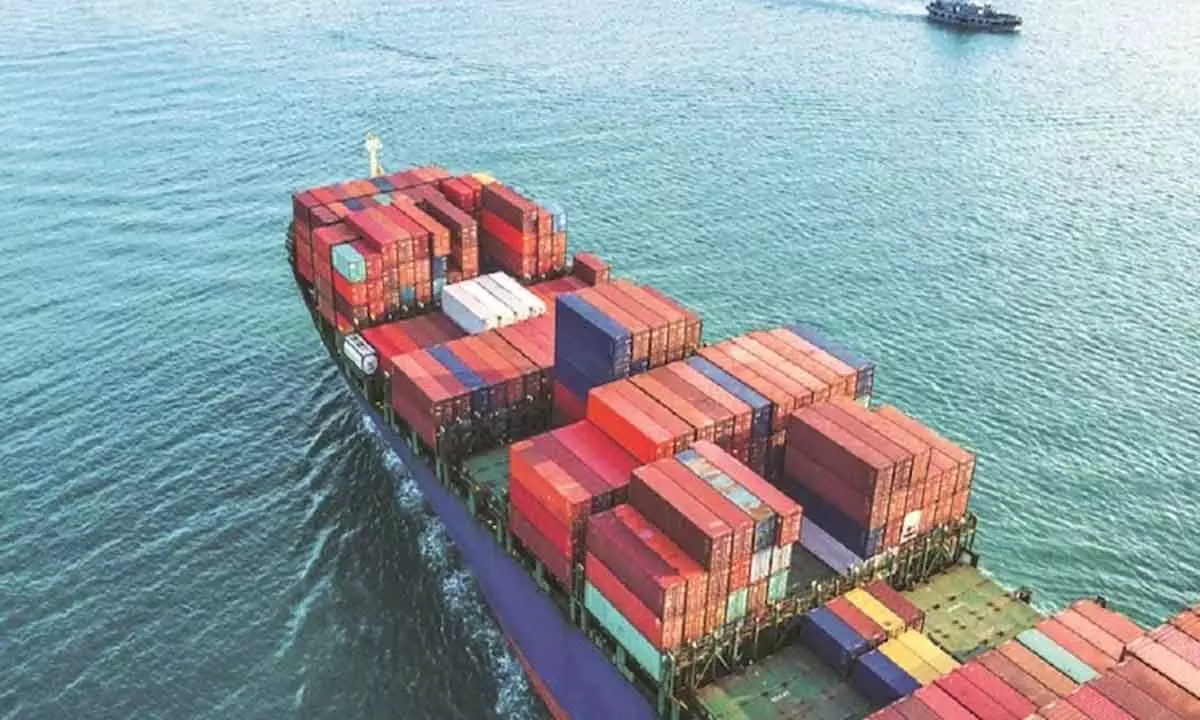Red Sea crisis hits India’s foreign trade
Rising freight costs and delays affecting agricultural, seafood exporters; textiles, pharma hold steady, while shipping charges see upside
image for illustrative purpose

Strained supply-chain
- Red Sea route accounts for half of India’s exports, 30% of imports
- Rising freight costs
- Agrico, marine foods feel biggest brunt
- Textiles, chemicals are moderately impacted
- Shipping gainingon higher rates
- Prolonged crises risks wider impact on profitability
Mumbai: The impact of the ongoing crisis around the Red Sea shipping route, which accounts for 50 per cent of the country’s exports and 30 per cent of imports last fiscal, will vary depending on the industry, according to a report.
The crisis in the Red Sea shipping route began after Yemen-based Houthi rebels launched frequent attacks on commercial shipping vessels plying through the route in November as a fallout of the Israeli-Palestinian war, which started in early October 2023. Currently, the US and British forces are also engaged in counter-attacks on the militants.
Domestic companies use the Red Sea route through the Suez Canal to trade with Europe, North America, North Africa and part of the Middle East. Last fiscal, these regions accounted for 50 per cent of the country’s exports worth Rs18 lakh crore and 30 per cent of imports worth Rs17 lakh crore. The country’s overall merchandise trade was Rs94 lakh crore last fiscal, with 68 per cent in value and 95 per cent in volume being sea-borne, according to a report by Crisil Ratings.
The country imports 30 per cent of DAP from Saudi Arabia, 60 per cent of rock phosphate from Jordan and Egypt, and 30 per cent of phosphoric acid from Jordan. Companies operating in sectors like agricultural commodities and marine foods could see a significant impact due to the perishable nature of their goods and/or lean margins, which limit their ability to absorb the risks from rising freight costs. The Shanghai Northern Europe container freight rates have risen by over 300 per cent to $6,000-7,000/TEU) since November 2023.
On the other hand, companies operating in sectors like textiles, chemicals and capital goods may not be immediately hit, as they have a better ability to pass on higher costs, or because of a weaker trade cycle. But a prolonged crisis can make these sectors also vulnerable as working capital cycles would get stretched with orders put on hold. However, a few sectors, such as shipping, could benefit from rising freight rates. Lastly, players in pharma, metals, and fertilisers will not be much impacted.
Increasing attacks on ships sailing in the Red Sea region since November 2023 have persuaded shippers to consider the alternative longer route past the Cape of Good Hope. This has not only stretched delivery time by 15-20 days but has also increased the transit cost substantially because of incremental freight rates and insurance premiums. For agricultural commodities like Basmati rice (30-35 per cent of production is shipped to these regions), exporters are feeling the pressure as rising freight costs have curbed exports and a part of their inventory is now being sold in the domestic market, leading to a moderation in realisations.
Similarly, marine items (predominantly shrimps and prawns) can also see a significant impact as 80-90 per cent of the production is exported, and over half of it is through the Red Sea. Their perishable nature and lean margins make exporters vulnerable to rising freight costs and competitive pressure from Latin American suppliers.

